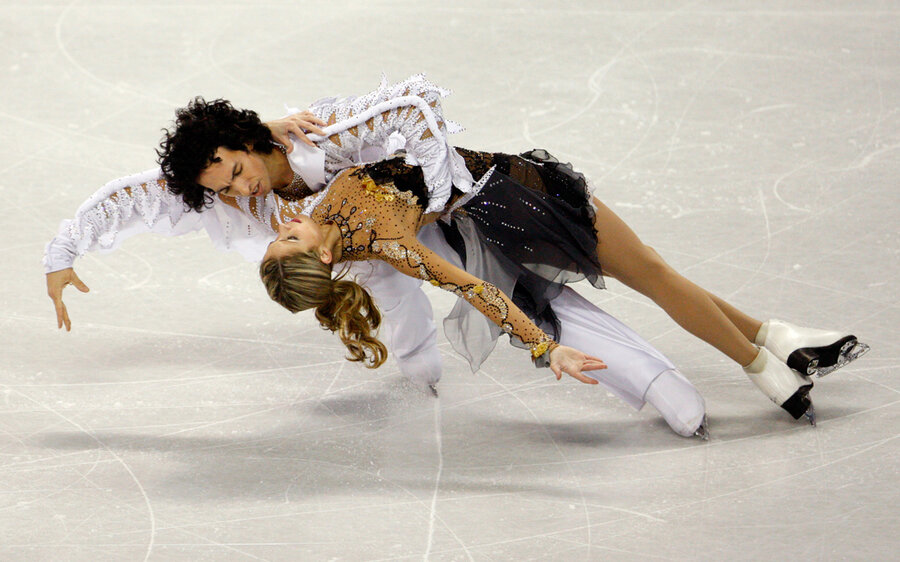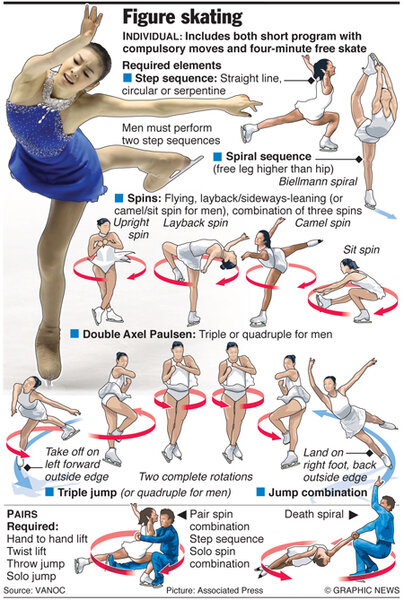Vancouver 2010 Olympic Games: Figure skating
A perennial favorite of spectators, this year’s figure skating competition could prove especially exciting for South Koreans, whose compatriot Kim Yu-Na – the gold-medal favorite – may well win the country’s first Olympic medal in the sport. It also promises to be an exciting event for the American men, who have a stacked 2010 team.
Who to watch
Evan Lysacek, USA (see video)
The Chicago native will arrive in Vancouver as one of the world's top-ranked skaters, positioning him well for his first Olympic medal. Since 2006 – when he placed fourth in the Torino Games – Lysacek has been a two-time national champion. He's also the 2009 world champion, the first American man to claim the title in 13 years. Expect Lysacek to arrive thoroughly prepared for the Vancouver Games: He says he competes at his best when he’s been training his hardest – meaning four to six hours a day on the ice.
Kim Yu-Na, Korea (see video)
Kim, the reigning world champion, is a celebrity of epic proportions in her home country of South Korea. Regarded as a national treasure, she was named the No. 1 Korean celebrity by Forbes Korea. A Korea Times survey named her as the Person of the Year, beating out President Barack Obama, United Nations Secretary-General Ban Ki-Moon, and South Korean President Lee Myung-Bak.
When Kim is not shooting advertisements for Hyundai, Nike, or Samsung, or recording her next pop album, she’s dominating the international ice skating circuit with her strong technical skills and superior artistry. Now based in Toronto, she can claim a bit of home-turf advantage in Vancouver.
Other Americans to watch: Lysacek is part of a powerful US men’s team that also includes 2010 US National Champion Jeremy Abbott and 2008 world bronze medalist Johnny Weir. While Abbott beat Lysacek at Nationals this year with a flawless quad, all three of them are serious contenders. In ice dancing, meanwhile, the US has two teams in the top five internationally: Meryl Davis and Charlie White, and Tanith Belbin and Ben Agosto.
Event Details
Click here for schedule and results.
A panel of nine international judges evaluates each skater. The overall score is based on technical evaluations and presentation scores. For the technical score, judges look at the execution of every element of the program while the presentation score is based on artistry and interpretation.
- Singles and pairs (see video): Skaters compete in two programs of choreographed jumps and spins – the short program and the free skate – to showcase their technical and creative abilities. The short program is no longer than 2:50, while the free skate is longer (4:00 for women, 4:30 for men and pairs) and is worth more of each skater's overall score.
- Ice Dance (see video): Similar to ballroom dancing, pairs work in unison to demonstrate their rhythm, precise technical abilities, and creative musical interpretation. Ice dancers stay in close contact throughout their performance and do not jump or perform lifts. Teams will compete in three programs:
- The compulsory dance: A pre-choreographed routine, identical for each team.
- Original dance: Skaters dance their own unique routine to a prescribed rhythm, which in Vancouver will be folk/country.
- Free dance: The most flexible program, in which skaters dance to music of their own choosing.
History
Once only a pleasant cold-weather pursuit, skating has matured into one of the Winter Olympics’ most popular events. The earliest record of gliding gracefully atop frozen lakes and ponds dates back to 1st-century Scandinavia, but the modern version grew from two 18th-century European approaches to the sport. Limited to small, frozen ponds with no place to go but around, British skaters developed elaborate patterns to etch into the ice with their skates while French skaters prized festive and aesthetically pleasing presentations. Today, these elements of exactness and creativity are the basis of competitive scoring.
Sources: nbcolympics.com, vancouver2010.com, Oxford Encyclopedia of World Sports






